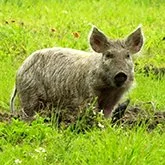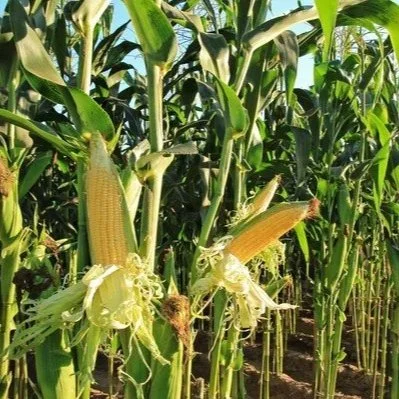As we approach late into the summer, we should be on the lookout for late-season lepidopteran pests of soybean. Soybean loopers can build large populations in a short amount of time and can be exaggerated by the use of broad-spectrum insecticides for stink bugs and three-cornered alfalfa hoppers.
Read MoreThe 2022/23 U.S. corn outlook for this month calls for lower supplies, reduced feed and residual use, slightly higher food, seed, and industrial use, smaller exports, and lower ending stocks. Projected beginning stocks for 2022/23 are 20 million bushels higher based on a lower use forecast for 2021/22, where a reduction in corn used for ethanol is partially offset by greater use for glucose and dextrose.
Read MoreThe Crop Production report issued Friday by USDA's National Agricultural Statistics Service (NASS) forecasted corn production down from 2021 and soybean production up from last year. Corn production is down 5% from last year, forecast at 14.4 billion bushels; soybean growers are expected to increase their production 2% from 2021, forecast at 4.53 billion bushels.
Read MoreUSDA released its August Crop Production report on Aug. 12 and the survey-based report has farmers indicating corn yields will reach 175.4 bushels per acre and soybean yields at a record 51.9 bushels per acre in 2022. This is despite extreme heat and sporadic rainfall throughout the countryside.
Read MoreLouisiana corn for grain production is forecast at 84.9 million bushels, down 18 percent from 2021. Based on conditions as of August 1, yield is expected to average 175 bushels per acre, down 8 bushels from last year. Producers expect to harvest 485,000 acres of corn for grain, down 80,000 acres from 2021.
Read MoreThe world is facing serious food and energy shortages as an outgrowth of the war in Ukraine and supply-chain shortages. Farmers are working to solve these problems, but we need help from the federal government if we are going to have any chance of success.
That’s why national corn grower leaders recently called on the Biden administration to address regulatory overreach.
How will this year’s weather conditions affect crop production? The Monthly Agricultural Yield Survey conducted by the U.S. Department of Agriculture’s National Agricultural Statistics Service (NASS) will survey U.S. farmers beginning July 30, 2022, regarding yields of the major row crops throughout the growing season across the United States.
Read MoreCorn harvest should begin in approximately two weeks, according to Kylie Cater Miller, LSU Extension associate.
According to Miller, Concordia’s corn crop has made it to the black layer, and farmers are preparing their harvest equipment.
Read MorePhosphorus is one of the three primary nutrients commonly found in fertilizers along with nitrogen and potassium. Phosphorus occurs naturally in soil, but it is usually in forms unavailable for plant uptake. Plants require phosphorus to grow, which is why farmers have been feeding it to their crops for centuries.
Read MoreThis month’s 2022/23 U.S. corn outlook is for larger supplies and higher ending stocks. Corn beginning stocks are raised 25 million bushels, based on reduced feed and residual use for 2021/22 as indicated in the June 30th Grain Stocks report.
Read MoreWith much of the corn crop denting, kernels are filling weight and size. Since heat unit accumulation has been higher this year, the crop is moving along at a much faster pace. As the corn crop approaches maturity, one of the most important management decisions you will make is when to terminate irrigation.
Read MoreUSDA’s June 30 Acreage report, which is a survey-based update of planted acres for the current crop year, indicates that for the 2022/23 crop year, farmers planted 88.3 million acres of soybeans, up 1% or 1.13 million acres, compared to 2021. This is, however, a significant decrease (2.6 million fewer planted acres) from the survey-based projections of the March Prospective Plantings Report. Corn planted acres are reported to be 89.9 million acres, down 4% or 3.4 million acres from 2021, and an increase of about 431,000 acres from what was reported in March intended acres.
Read MoreThe U.S. Department of Agriculture (USDA) National Agricultural Statistics Service in cooperation with the USDA Animal and Plant Health Inspection Service (APHIS) - Wildlife Services, is conducting a Feral Swine Damage survey to measure the costs of feral swine damage to crop producers growing corn, soybeans, wheat, rice, peanuts, and sorghum in the states of Alabama, Arkansas, California, Florida, Georgia, Louisiana, Mississippi, Missouri, North Carolina, South Carolina, and Texas.
Read MoreThe midwestern Corn Belt — which roughly covers parts of Indiana, Illinois, Iowa, Missouri, Nebraska and Kansas — will be “unsuitable” for cultivating corn by 2100 if climate change continues on its current trajectory, a new study finds.
“The future climate conditions … will significantly reshape biophysical suitability across the Central and Eastern U.S., causing a near collapse of corn cultivation in the Midwestern U.S. by 2100,” the study, published in Environmental Research Letters, concludes.
Read MoreIn any ‘normal’ crop year, replanting costs play a substantial role in estimating the additional production cost per unit (bushel). However, inflationary pressures and input price volatility observed since the fall of 2021 have cut into expected profit margins for 2022.
Read More














